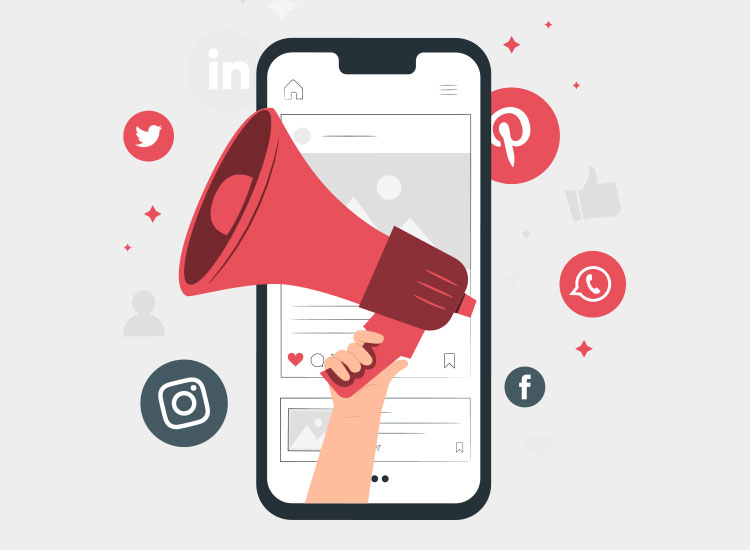Is it your website's design or the website's content that is holding your business back? Keep reading and find out whether you need a complete redesign or if you just need to optimise your content. You may be surprised by what you discover.
Should you optimise or update? Which option is right for you
When it comes to updating websites you need to determine if you can get away with just making improvements or whether your only option is a complete overhaul.
Your website has the potential to bring in lots of business. Customers will use your website to learn what you can do and whether you're a good fit.
But for that to happen your visitors must explore your website. Your website's main job is to convince them why they should use your business instead of your competitors.
First, identify the actual problem with your website and then resolve those issues before doing a complete update and redesign
Identifying what problem you have
If your website isn't getting any inquiries from customers then you need to find out why and fix the issue.
Before you dive in, you need to first determine where the issue lies.
If visitors don't stick around then the problem could lie in the web design. But if you are getting visitors and they don't contact you then the problem could be in your website's content
It is easy to fault 'design' as the main reason for poor performance.
But when you put your website under a microscope, you may be surprised to learn that it's something else completely.

What it means to 'optimise' your website's content
You can make a big difference simply by identifying thin content and weak performing areas or making changes to your calls-to-actions.
opens in new window 'Thin content' is described by Google as content that has “little or no added value”. Making these improvements can positively impact visitors behaviour and their decision-making process.
Improving content could be the difference between choosing you or your competitor. It can help to shape a better perception of your business to potential customers.
Forming a marketing strategy and refining your website is sometimes more beneficial than getting a new web design.
No matter how good looking a new website is, if it's unhealthy on the inside then it's still doomed to fail.
Avoid a complete redesign of your website if you can solve it's problems with optimised changes to the content instead.
Before we continue, how much traffic is your website getting?
If you are getting NO traffic on your website then it's clear you aren't doing any digital marketing.
Forget about updating and optimising and make a plan for getting people to your website instead.
If you don't take part in activities that bring in traffic then your website will never generate revenue and an update will never solve your problems.
Techniques to bring in more traffic
As long as your site is fairly new and looks decent, invest your money in getting more traffic instead.
1. Advertising and paid traffic campaigns
The most obvious and quickest way to get traffic is to pay for it.
There are many platforms that lets you pay to reach your target market.
Search engines like Google and Bing should be the first place to look. Followed by social media platforms like Facebook and Instagram.
Ultimately the method you choose will depend on whom and what you want to achieve. Make sure to implement some form of tracking (Google or Facebook pixels) to measure the effectiveness of your campaigns.
2. Search Engine Optimisation (SEO)
Does your website show up on results when people search with your keyword?
If you want to appear in search results then your website must comply with industry best practices.
SEO companies are the ones that can help you achieve compliance.
Ranking can be a long process and take awhile before you appear in search results. It largely depends on which industry and how competitive it is.
So is SEO worth it?
Short answer, yes. Trust me, you want the kind of traffic good SEO can bring in.
3.Start a business Blog
Blogging is a true and tested way of getting more traffic. Great content brings in new visitors and keep older ones coming back.
The best part is, anyone can start blogging if you have WordPress on your website.
4.Get active on Social media
Being proactive on social media is another proven strategy to gain more traffic.
After creating great content you want to let as many people know about it.
Social media has created the means to share anything and everything. Use it to get the word out on all the channels applicable to your business.

What if you do have traffic, but no one is contacting you
If you are getting decent traffic and visitors but not any inquiries then start examining your website content to uncover problematic areas. There are several things you can check and actions you could take.
1.The wording on your pages
Does your website read like a textbook? Are you putting off your audience with words that are too serious and academic?
Setting the right tone can make a huge difference.
Good wording can motivate customers to contact you or buy from you. Poor wording can have the complete opposite effect.
Copywriting is the art of making words compelling. Hiring a good copywriter should be one of the first things to do in a website project.
Sadly, wording is often an afterthought.
But if you have the opportunity make sure to get the wording done by a professional first. It could solve a lot of traffic issues you might experience later.
2.Are your 'calls to action' prominent enough
Are you using calls to action like 'Call us now' or 'Get in touch'? If you do that's great.
The question then is, can your customers see them clearly?
If you included these calls to action within your content then there is a good chance it will be missed.
Make sure your calls to action are clear and prominent, just like the bolded text.
Otherwise, it may get lost in the sea of text the reader must navigate through.
3.Worse still you don't have any calls to action
Start including them in your content immediately!
A simple opens in new window search on Google can give you some ideas of what you can use. Calls to actions do work and proven to generate inquiries and sales.
Seriously, if you haven't already then put some CTA's in your content today!
4.If you do already blog, then optimise your articles
Are visitors coming to your website through one of your blog articles? Great, that's exactly why you should blog.
But once they arrive are they making contact with you? If not then you may need to refine and optimise your articles to get inquiries.
Optimising could mean adding more words, updating older irrelevant content, or in extreme cases rewriting large portions of the article.
If you are unsure what to optimise then get in touch with an SEO professional or copywriter.
They can see areas where you can improve.
When to update the website design completely from scratch
If you are going to update from scratch then please heed the following recommendation before diving straight in.
Orgainse a business discovery session to identify problems with the current website and uncover goals the new website should hit.
Once goals are established, either refine existing content to incorporate those goals or uncover new opportunities to include fresh content.
Certain scenarios clearly demand a complete update of a website. No amount of optimisation can save a website that experiences any of the following issues.
1.Not mobile-friendly on phones or tablets
This is a no-brainer.
In 2019 over 60% of Google searches were made on a mobile device. Not being mobile-friendly means you are missing out on countless opportunities.
There are no quick fixes here and will require a complete rework to display properly on mobile screens.
If your website still isn't responsive then we suggest you do something about it straight away.

2.Takes a long time for the website to load
Waiting for a website to load is the number one thing people dislike about browsing the web.
So if your website takes longer than 5 seconds to load be very concerned. It will negatively impact the experience of potential customers.
There are fixes you can apply to make websites run faster. Usually, it's a combination of expensive hosting and a lot of plug-ins (that ironically causes more lag).
However, most fixes are usually short-term and patchy at best. The main reason for a slow website is the way it's built.
The best way to correct speed issues is to develop them properly from the start.
That's why a complete update is sometimes the only option to get a website running faster.
3.The design looks dated and unprofessional
Let's be honest for a second.
How it looks is not nearly as important as having good strategic content, being fast loading, or being able to work properly on mobile devices.
But if your website looks like it was made 10 years ago then bringing it in line with modern trends could be a game-changer your business needs.
A good-looking website makes it easier to convert a visitor into a customer. They make a good impression and increases the level of trust and willingness to do business with you.
A website that looks like your nephew made it has the complete opposite effect.
Conclusion
In the end, updating your website shouldn't just focus on beauty or looks. The project should also deliver a web design that incorporates and reflects your marketing strategies too. You could benefit greatly from optimising content instead of redesigning your website from scratch.
